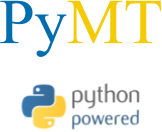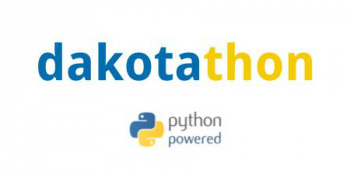Tools portal: Difference between revisions
m Link to PyMT page |
m Removed transclusion |
||
| Line 52: | Line 52: | ||
==PyMT== | ==PyMT== | ||
[[ File:Pymt-logo-cropped.png | right ]] | |||
PyMT is an Open Source Python package, developed by the Community Surface Dynamics Modeling System, that provides the necessary tools used for the coupling of models that expose the Basic Modeling Interface (BMI). It contains: | |||
* Tools necessary for coupling models of disparate time and space scales (including grid mappers) | |||
* Time-steppers that coordinate the sequencing of coupled models | |||
* Exchange of data between BMI-enabled models | |||
* Wrappers that automatically load BMI-enabled models into the PyMT framework | |||
* Utilities that support open-source interfaces (UGRID, SGRID, CSDMS Standard Names, etc.) | |||
* A collection of community-submitted models, written in a variety of programming languages, from a variety of process domains - but all usable from within the Python programming language | |||
* A plug-in framework for adding additional BMI-enabled models to the framework | |||
==Dakotathon== | ==Dakotathon== | ||
Revision as of 16:05, 27 December 2016
Tools
CSDMS-IF (and maybe community?) has developed tools for the community to use. We should at least mention for each of our tools the following:
- why to use tools (how does a tool help them in their research),
- how to use the tools,
- where to get more information on the tools,
- how to report bugs, ....
- you name it.
I put your name down below each tool that needs more info. Maybe each tools needs its own page that links from this page, so the items below are really just a placeholder.
So type away, focus less on layout more on content right now maybe?
Thanks, A.
BMI
Eric
BMI builder
Eric
BMI tester
Eric
WMT

The CSDMS Web Modeling Tool, WMT, is a web application that provides an Ajax client-side graphical interface and a RESTful server-side database and API that allows users, from a web browser on a desktop, laptop or tablet computer, to build and run standalone or coupled Earth surface dynamics models on a supercomputer.
With WMT, users can:
- Design a model from a set of CSDMS components
- Edit model parameters
- Save models to a web-accessible server
- Share saved models with the community
- Submit model runs to an HPC system
- Download simulation results
To see how you can use WMT to configure and run a standalone or a coupled model on the web,
check out the WMT tutorial,
or jump right into using WMT at https://csdms.colorado.edu/wmt.
For more information on WMT, including links to its documentation and its source code repositories, please see the CSDMS Web Modeling Tool wiki page.
PyMT

PyMT is an Open Source Python package, developed by the Community Surface Dynamics Modeling System, that provides the necessary tools used for the coupling of models that expose the Basic Modeling Interface (BMI). It contains:
- Tools necessary for coupling models of disparate time and space scales (including grid mappers)
- Time-steppers that coordinate the sequencing of coupled models
- Exchange of data between BMI-enabled models
- Wrappers that automatically load BMI-enabled models into the PyMT framework
- Utilities that support open-source interfaces (UGRID, SGRID, CSDMS Standard Names, etc.)
- A collection of community-submitted models, written in a variety of programming languages, from a variety of process domains - but all usable from within the Python programming language
- A plug-in framework for adding additional BMI-enabled models to the framework
Dakotathon

Dakota is a software toolkit developed at Sandia National Laboratories that provides an interface between models and a library of analysis methods, including support for sensitivity analysis, uncertainty quantification, optimization, and calibration techniques. Dakota is a powerful tool, but its learning curve is steep: the user not only must understand the structure and syntax of the Dakota input file, but also must develop intermediate code that allows Dakota to set up and run a model, read outputs from the model, and calculate a response statistic from the outputs.
The CSDMS Dakota Interface, or Dakotathon, is a Python package that wraps and extends Dakota’s file-based user interface. It simplifies the process of configuring and running a Dakota experiment, and it allows a Dakota experiment to be scripted. Dakotathon creates the Dakota input file and provides a generic analysis driver. Any model componentized in the CSDMS modeling framework automatically works with Dakotathon. Dakotathon has a plugin architecture, so models not wrapped into the CSDMS modeling framework can be accessed by Dakotathon by programmatically extending a template; an example is provided in the Dakotathon distribution.
For more information on Dakotathon,
including links to its documentation and its source code repository,
please see the Dakotathon wiki page.
